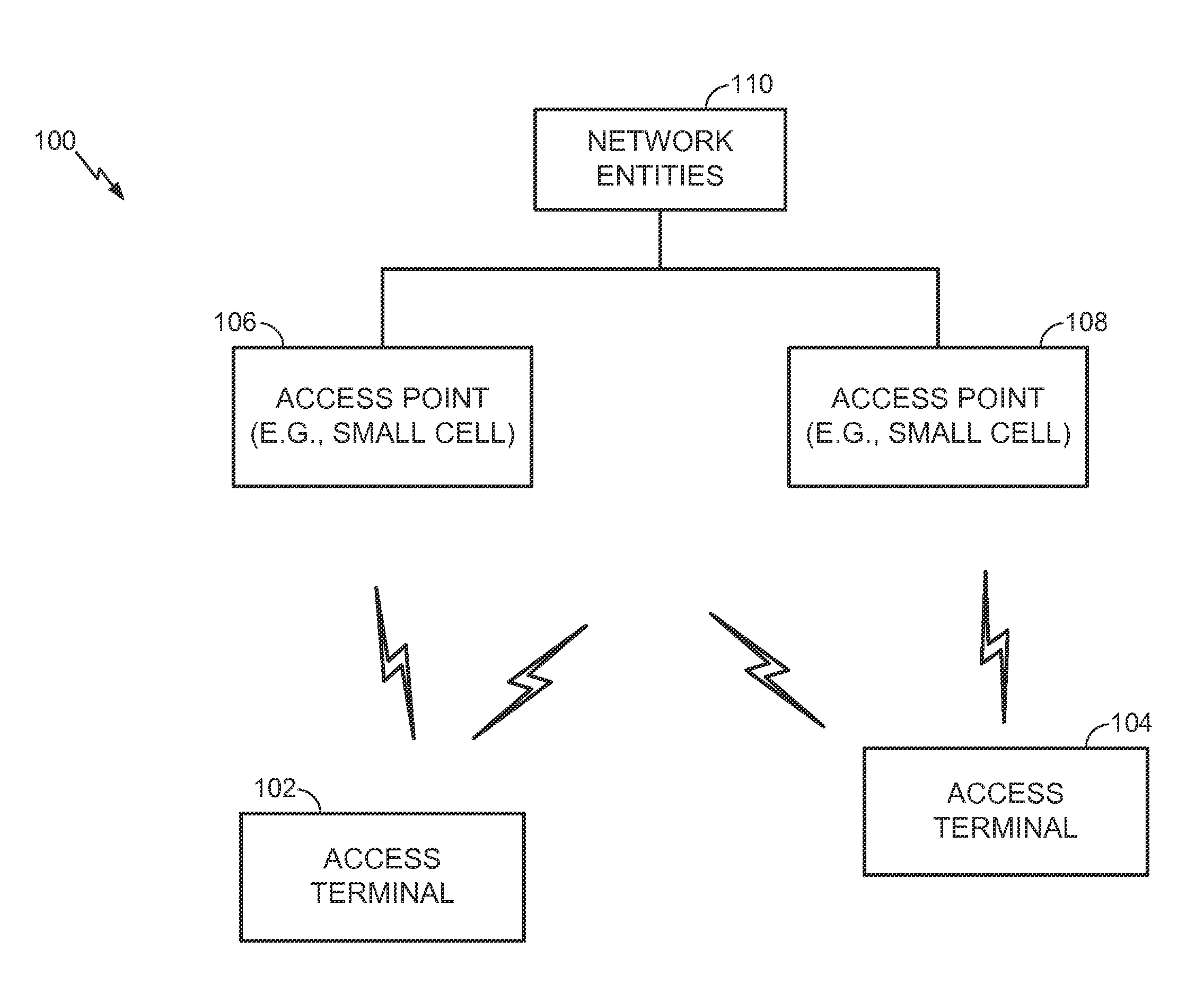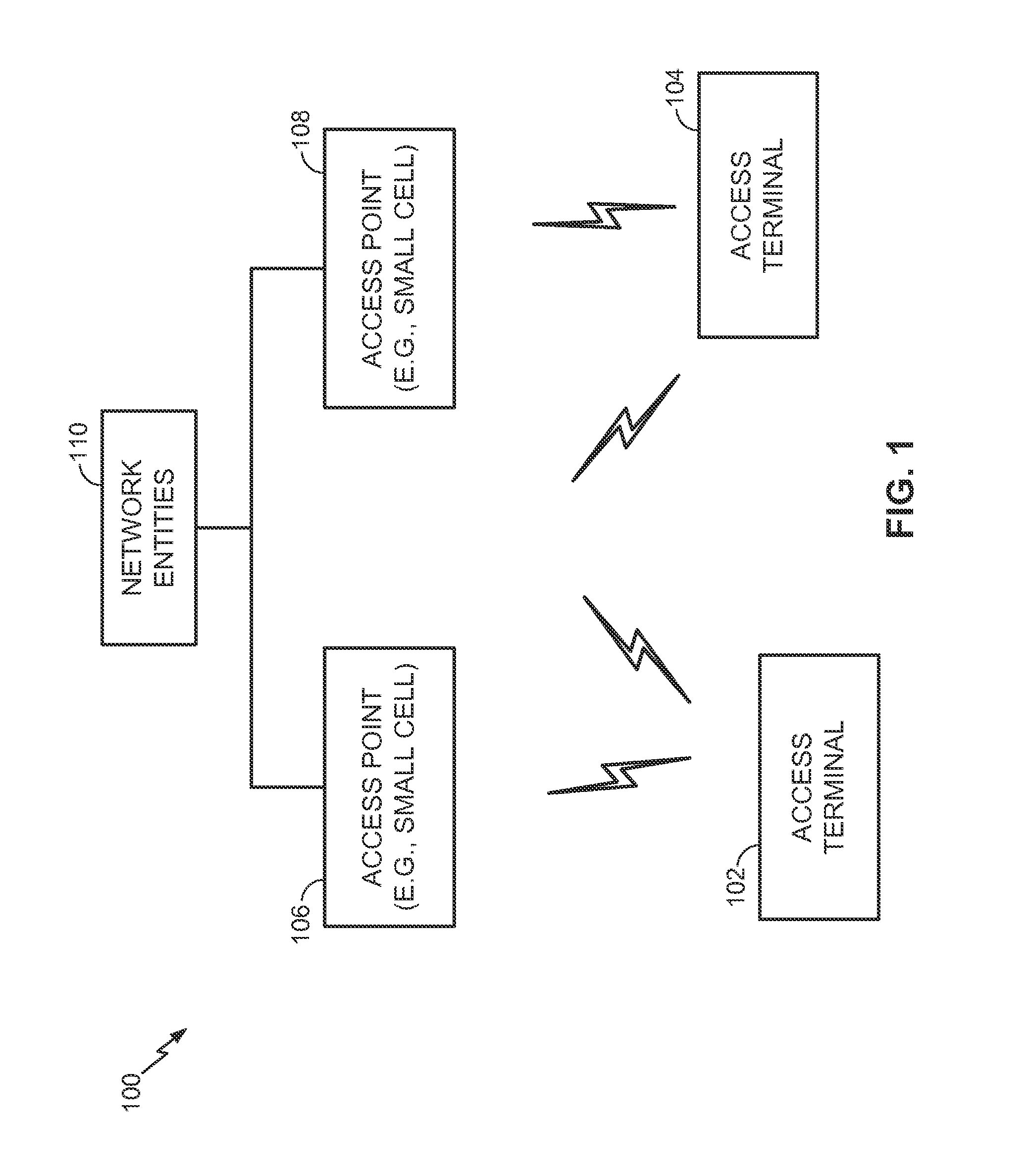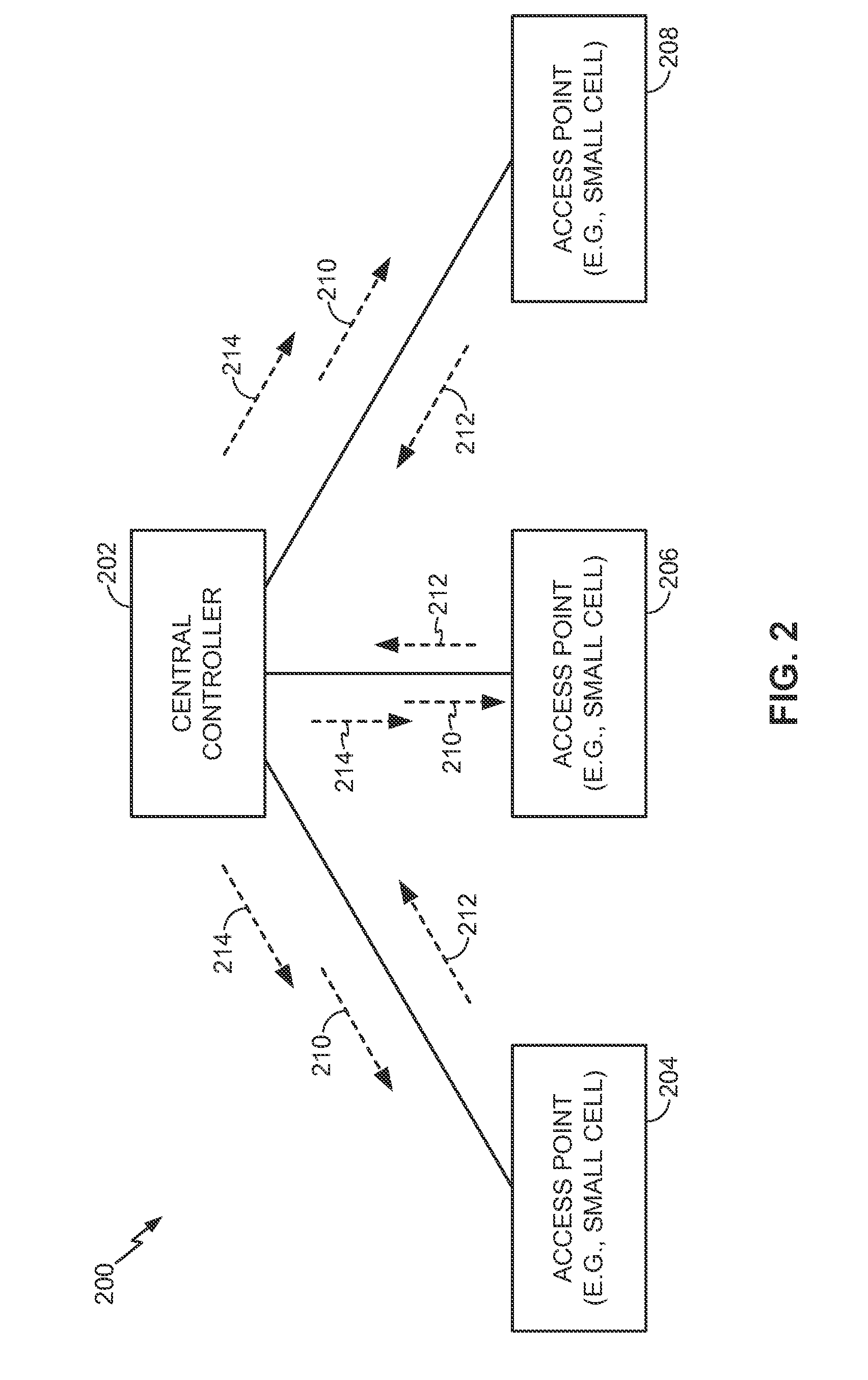Scheduling based on signal quality measurements
a signal quality and scheduling technology, applied in the field of communication resource coordination and management, can solve the problems of reducing user throughput and network capacity, affecting the deployment of small cells, and affecting the efficiency of data transmission,
- Summary
- Abstract
- Description
- Claims
- Application Information
AI Technical Summary
Benefits of technology
Problems solved by technology
Method used
Image
Examples
Embodiment Construction
[0028]The disclosure relates in some aspects to determining data transmission schedules for access points (e.g., for small cell deployments). In general, the schedule is defined in an attempt to maximize overall network utility.
[0029]Various types of small cell access points may be employed in a given system. For example, small cell access points may be implemented as or referred to as low-power access points, femto cells, femto access points, femto nodes, home NodeBs (HNBs), home eNodeBs (HeNBs), access point base stations, pico cells, pico nodes, or micro cells.
[0030]For convenience, various such access points may be referred to simply as small cells in the discussion herein. Thus, it should be appreciated that any discussion related to small cells herein may be equally applicable to such access points in general (e.g., to femto cells, to micro cells, to pico cells, etc.). Also, the concepts disclosed herein may be applicable to macro cells or to mixed macro cell and small cell de...
PUM
 Login to View More
Login to View More Abstract
Description
Claims
Application Information
 Login to View More
Login to View More - R&D
- Intellectual Property
- Life Sciences
- Materials
- Tech Scout
- Unparalleled Data Quality
- Higher Quality Content
- 60% Fewer Hallucinations
Browse by: Latest US Patents, China's latest patents, Technical Efficacy Thesaurus, Application Domain, Technology Topic, Popular Technical Reports.
© 2025 PatSnap. All rights reserved.Legal|Privacy policy|Modern Slavery Act Transparency Statement|Sitemap|About US| Contact US: help@patsnap.com



